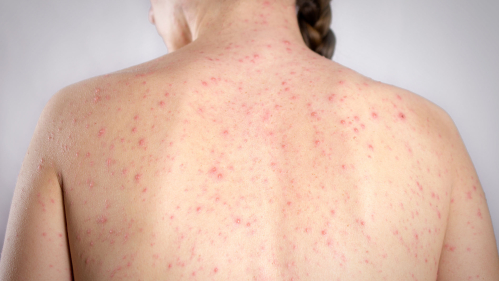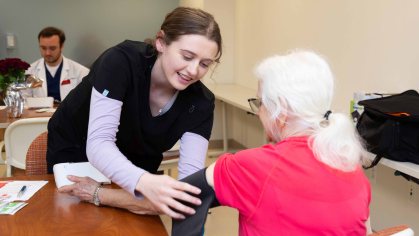Antiseizure Medications Can Produce Life-Threatening Reactions

Targeted blood tests, asking patients about risk factors, and dose modifications can lessen the risk of potentially fatal reactions to antiseizure medications that millions of Americans take for epilepsy and other conditions. However, skin reactions in newly medicated patients still require speedy medical attention, according to research from Rutgers Health.
Rashes are a common side effect of antiseizure medications, occurring in 2 to 16 percent of patients and vary by specific drug.
Although most rashes are not life-threatening, roughly 5 percent indicate life-threatening reactions. The FDA recently issued a warning about serious reactions to two antiseizure medications: levetiracetam and clobazam.
“Dangerous reactions are rare, but patients and caregivers should understand the risk and how to respond if side effects occur,” said Ram Mani, chief of the adult epilepsy division at Rutgers Robert Wood Johnson Medical School and lead author of the study published in Current Treatment Options in Neurology.
“Patients should seek medical treatment if rashes develop rather than waiting for them to disappear,” added co-author Cindy Wassef, an assistant professor of dermatology at Robert Wood Johnson Medical School. “If symptoms are mild, they can contact their neurologist or primary care physician, but serious symptoms like a high fever, skin pain, or blisters warrant a trip to the emergency room or a 911 call.”
Despite these risks, antiseizure medicines are important for many medical conditions. The proper antiseizure medication can stop further seizures in 70 percent of patients. Such medications also help many patients with bipolar disorder, anxiety, migraines and neuropathic pain.
This new review synthesizes published data on individual antiseizure medications and distinguishes the different rashes and their triggers.
Risk factors for severe reactions include the use of aromatic antiseizure medications, rapid dose escalation, genetic predisposition, and certain drug interactions.
“Patients who react to one medication are more likely to react to others with structural similarities, but with 30 FDA-approved options, we can typically find each patient an effective treatment with minimal to no side effects,” Mani said.
In the most common non-disabling reaction, the rash typically occurs within two weeks of treatment and affects the torso or limbs with a flat rash or hive-like bumps. It usually disappears without treatment a few weeks after patients stop the medication.
Severe conditions, on the other hand, often require urgent treatment. In Stevens-Johnson syndrome or toxic epidermal necrolysis — which produces fever, eye pain and detached skin — inpatient care is often needed.
Mani estimated that several thousand patients suffer severe reactions to antiseizure medications each year, but the numbers could decrease if neurologists consistently put high-risk patients on low-risk medicines.
“I gave a talk on this topic at the American Epilepsy Society Conference last year, and I asked the more than 200 doctors in the room how frequently they perform the recommended HLA screening tests on indicated patients, and only a handful raised their hands,” Mani said. “So there’s definitely room for improvement to increase patient safety.”


